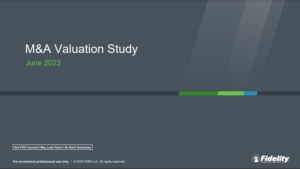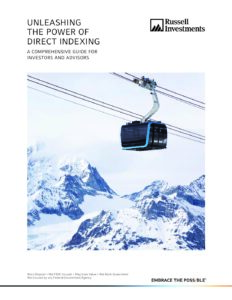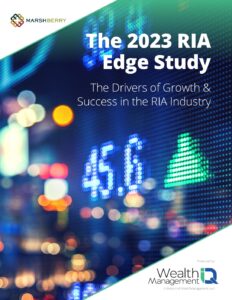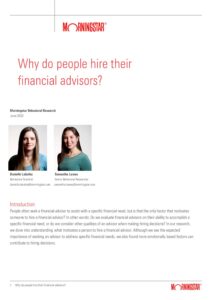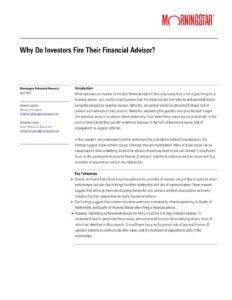Strategic Research is the Backbone
Advitalize was born from a vision to enable low-AUM RIAs to accelerate growth and compete head-to-head in capabilities with “big-brand” firms while holding true to their essential presence in a local community.
Quality and timely research validates Advitalize’s vision and the opportunity at hand.
Key Takeaways:
- Mutual fund usage is in decline while individual bonds, ETFs, private equity, and direct indexing are on the rise.
- Client acquisition and recruiting staff are the top priorities.
- Top-performing firms are almost twice as likely to have a written strategic plan.
- Firms spend slightly over 2% of revenue on marketing (i.e., $5,000 on revenue of $250k ($25M in AUM * 1% advisory fee)
- Firms with marketing plans, client personas, and client value propositions grew clients 52% faster and AUM 46% faster.
- Large firms use direct indexing more than double small firms.
- Clients with <$1M in AUM are more than 50% of all firms but generate 22% of revenue.
- Top-performing firms grew AUM at a 14.1% rate over 5 years vs. 5% for all other firms.
Key Takeaways:
- Firms with <$1B in AUM gain just 28% of clients from marketing activities vs. 43% firms with >$1 B.
- 70% of firms have the top strategic initiative “improving marketing and business development efforts”.
- Clients with <$1M are 59% of clients but 26% of AUM in firms <$1B whereas small-AUM clients are 43% and 14% of AUM in firms >$1B.
- Smaller firms discount fees at a higher rate than larger firms.
- Smaller firms, when outsourcing investment services to model portfolios, use this for nearly all clients.
- Advisors outsourcing investing save 9.1 hours/week.
Key Takeaways:
- The median AUM for a completed deal was $400M between January 2020 and March 2023.
- The main driver of a seller’s interest was to “reduce operating duties and focus on client needs” followed by “full or partial liquidity”.
- For buyers, the top reason was to acquire talent.
- Median EBITDA multiple on completed deals was 9X.
- 68% of the deal price was in cash and the remainder in equity, with the average deferred payout at 2.5 years.
- 60% of acquirers expect deal volume to increase over the coming 5 years.
Key Takeaways:
- Firms >$100M in AUM are substantially more likely to have increased demand than advisors with <$50M.
- Average marketing spend is $17.4K and 3.1% of budget.
- 53% of investors most want their advisors to provide educational content, but the dominating reasons for not doing so are is “not enough time” and “not sure how to go about it”.
- 47% of advisors do not have a regular outreach to promote expertise.
Key Takeaways:
- Orion was ranked as the top backoffice technology.
- Total fees for a UMA through a TAMP are 1.5% – 2.5%, with larger accounts being charged between 100 and 175 bps.
- UMA models cost between 35 and 50 bps.
- RIAs are the top users of TAMPs at $93B followed by independent broker/dealers at $24.41B; the total market is $2 trillion.
- TAMPs target client accounts with <$1M using mutual fund and ETF wrap accounts whereas larger-AUM clients emphasize UMAs.
- The top reason for using a TAMP is “have more time to service clients’ needs”.
Key Takeaways:
- “Direct indexing allows investors to own the securities that make up an index and hold them in a separately managed account (SMA). This gives the investor the same market exposure as the index but also gives them the opportunity to build a customized portfolio. The investor can exclude certain securities or increase their exposure to other securities to reflect their specific goals, needs, or circumstances.”
- The top benefits for direct indexing are: tax efficiency; customization; risk management; purpose-based investing.
- Even in strong upmarkets, there are large percentages of an index that incur losses that will benefit from tax-loss harvesting.
- HNW investors have been the traditional focus for direct indexing and its benefits.
Key Takeaways:
- 84% of clients have <$1M in assets.
- The main source of new business is referrals.
- In-person client events are most effective in driving qualified leads followed by social media marketing.
- Slightly more than half of advisors did not have a full-time role for marketing and business development.
- Advisors believe that marketing efforts were average and marketing spend was under downward pressure.
- M&A acquirers sought growth through a larger client base and increases in revenues.
Key Takeaways:
- In the US, about one third of Americans report working with a financial advisor, yet 62% report needing to improve their financial planning,
- The two most-cited reasons given for hiring an advisor were Discomfort handling financial issues (32% of responses) and
Specific financial needs (32% of responses). Participants also commonly cited Behavioral coaching (17%), Recommended by friends/family (12%), and Quality of relationship with advisor (10%). - Clients hired their advisor not just because they were looking for assistance with a specific financial problem. Indeed, they more often listed an emotional reason (60% of responses) than a financial reason (40% of the time) for hiring a financial advisor.
Key Takeaways:
- Only 6% of our sample ever felt the need to break a relationship with an advisor, which generally means that firing is a relatively rare occurrence and is good news for advisors.
- However, existing research notes that many people stick with their advisor because they don’t want to incur the cost of switching; instead, they choose to move assets out of an advisors’ practice instead of ending the relationship entirely.
- The two most cited reasons investors fired their advisor were the Quality of Financial Advice and Services (32% of responses) and the Quality of The Relationship (21% of responses) categories. Responders also tended to cite Cost of Services (17%), Return Performance (11%), as well as their Comfort Handling Financial Issues on Their Own (10%) as reasons for firing.


